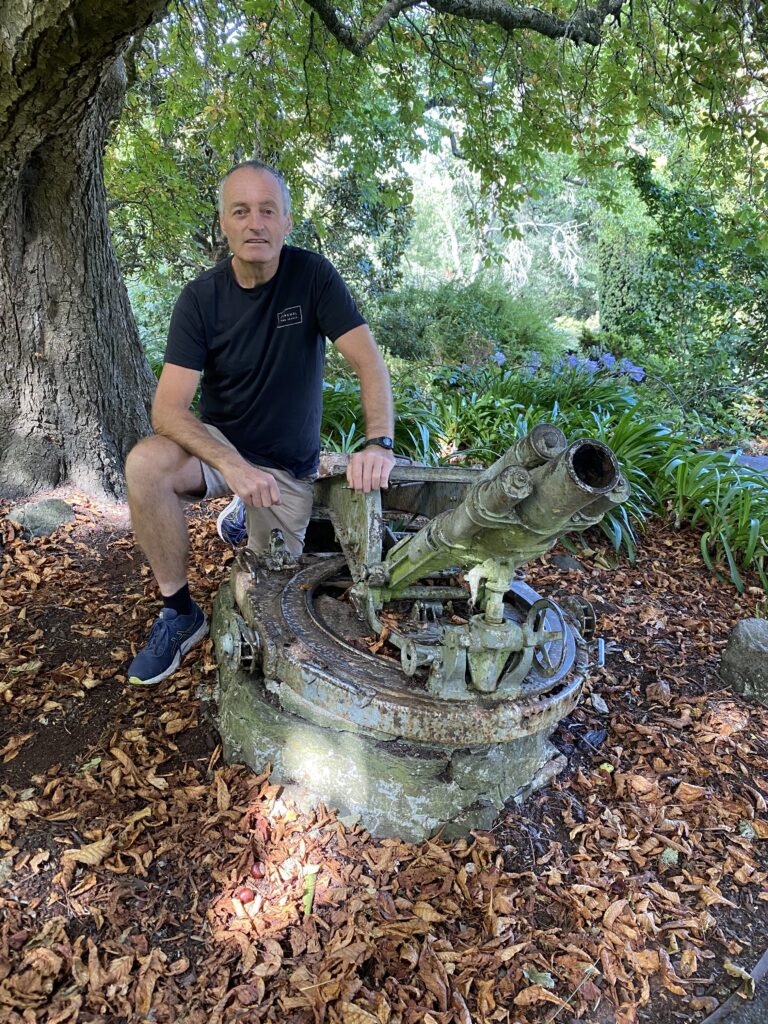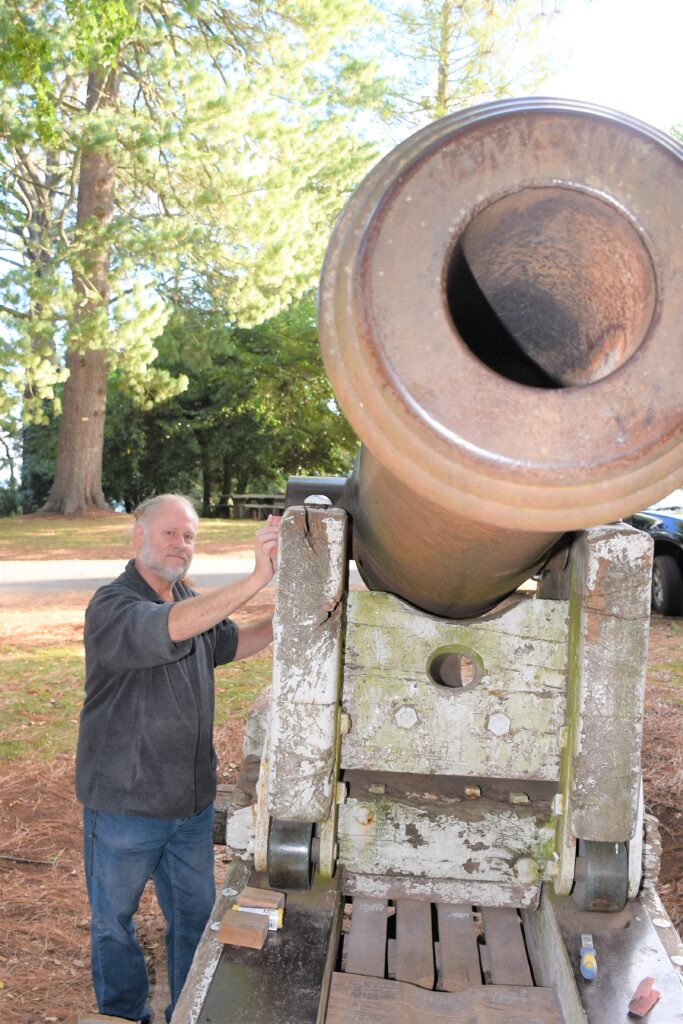March 29th, 2022‘Mortar-fied’: no council cash for old gun
WORLD War I lasted four years. Paul Dwyer has spent that much time trying unsuccessfully to restore an historic weapon from that conflict that is rusting away in Wombat Hill Botanic Gardens.
Councils across Australia bought such weapons from the federal government at the end of that war to try to ease the national debt.
The former shire of Daylesford and Glenlyon paid 5000 pounds for a German mortar captured by the 22nd Australian artillery in 1918. Today’s equivalent sum would be about $516,000. No money has been set aside by the council to restore the mortar.

During his campaign, Paul, Daylesford born and bred and at 59 in his 43rd year with the railway workshops United Group Limited, in Ballarat, waited exactly a year for a response from the council to an email message about the mortar, which is near the garden’s glasshouse.
The Local asked the council about this, but it did not respond. It did say it has been in regular contact “for an extended period”.
He has offered to restore the mortar at his firm’s workshops for nothing. He is worried that it may suffer a similar fate to a cannon which fell into disrepair in the 50s and 60s and is rumoured to have disappeared down a mine shaft in the East Street Sunday Market car park.
A council spokesperson acknowledged Paul’s “fantastic” offer and says it is “equally disappointed we are not able to take advantage of this without incurring significant additional costs”.
The spokesperson added that in early 2019, council officers met Paul at the mortar to discuss the possibilities and his kind restoration offer.
“In considering this, it is important to understand that Wombat Hill Botanic Gardens is listed on the Victorian Heritage Register which mandates a permit from Heritage Victoria for any works within the Botanic Gardens (including the WWI mortar). It should also be noted that the WWI mortar is specifically detailed in the Conservation Management Plan for the site.”
In December 2019, the council told Paul that Heritage Victoria had said the mortar was individually listed and “considered to be of primary significance” in the 2007 conservation management plan for the gardens.
But any work on it would need to be “by suitably qualified and experienced professionals (usually conservators), in line with the best conservation practice.”
The council added that if Heritage Victoria were to consider approval of this restoration by the workshops, it would likely require, as a minimum, that the council engage a conservator to oversee it. This was because it needed to believe that the workshops had sufficient skill and experience, to “manage the restoration works in accordance with best conservation practice”. Says Paul: “They’re just going around in circles when what they mean is, ‘We don’t have to do anything’.”

Back in 2017 The Local covered a story about researcher Peter Webster, inset image, who travelled from Sydney, at his own expense, to work on a 1861 cannon, also at the botanic gardens. The wooden mounting of the cannon is the oldest in Australia.
Peter was in touch with Hepburn Shire Council at the time but spent four days on his own sanding back some of the paint work so it would be possible to give the wood a coat of linseed oil to protect it.
At the time, he said it would also be a starting point for locals, whether council or volunteers, to come and “carry on and finish this work bit by bit”.
Both the one-tonne mounting and almost five-tonne gun came from Britain with the gun cast at Low Moor Ironworks in Yorkshire before being taken to the Royal Arsenal in Woolwich in London to be proofed and accepted into army service. The mounting was made at the Royal Carriage Department, part of the Royal Arsenal.
Mr Webster said the guns were brought out to Australia to protect defences around Port Phillip Bay in the mid-1860s. But by the late 1890s it became obvious they were becoming obsolete and after federation, between 1901 and 1910 the new federal government decided to distribute them around the country.
Asked the worth of the cannon, Mr Webster just says “priceless”.
Words: Kevin Childs | Images: Kyle Barnes










